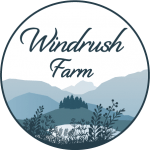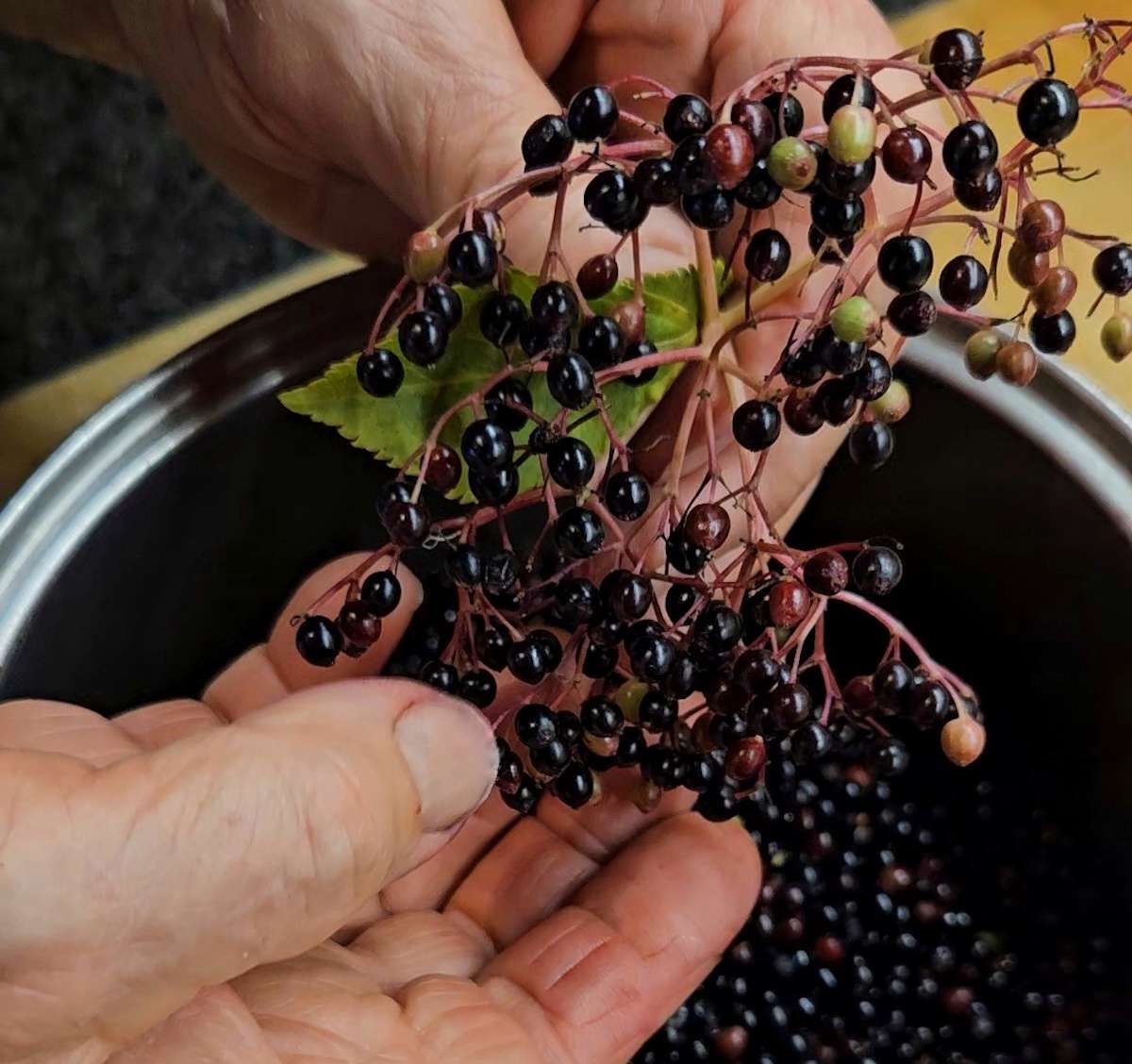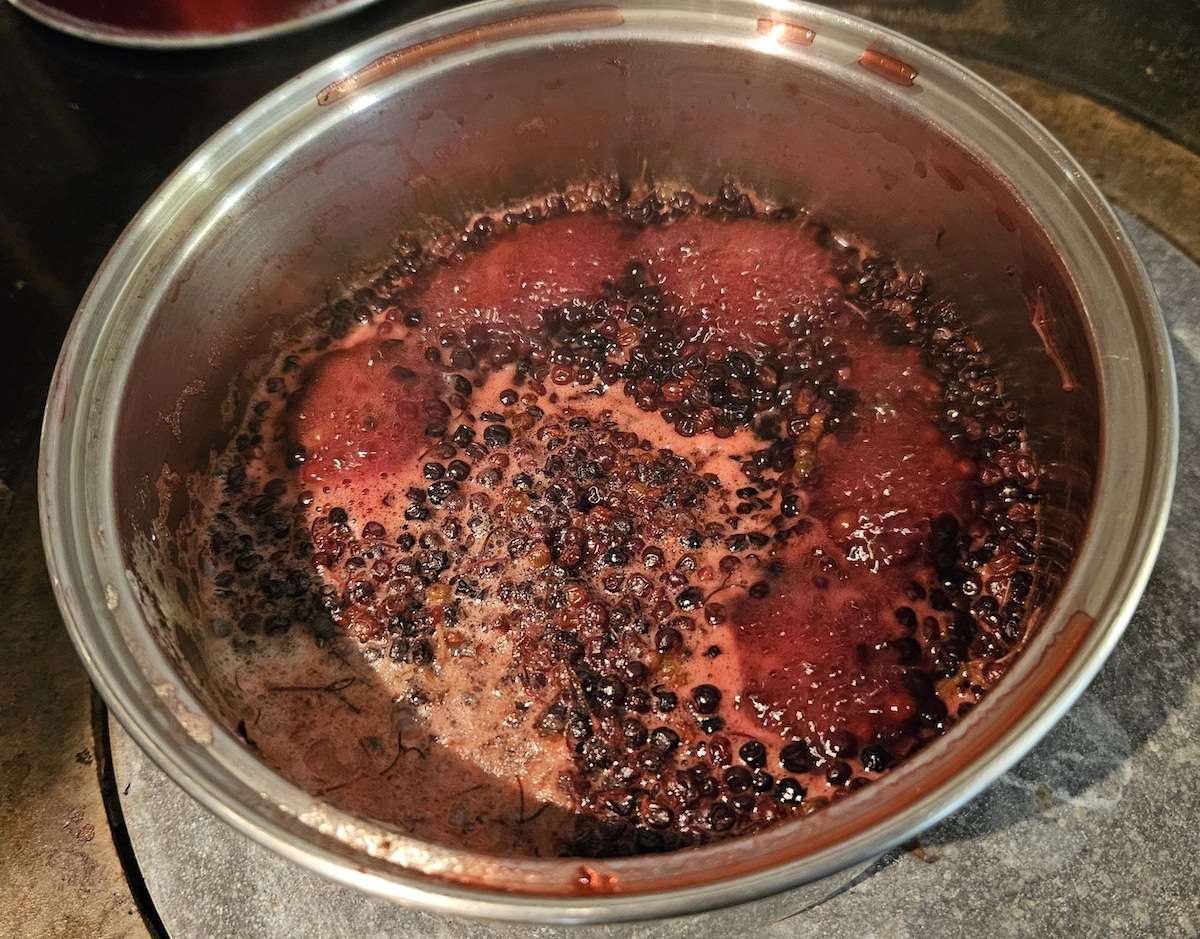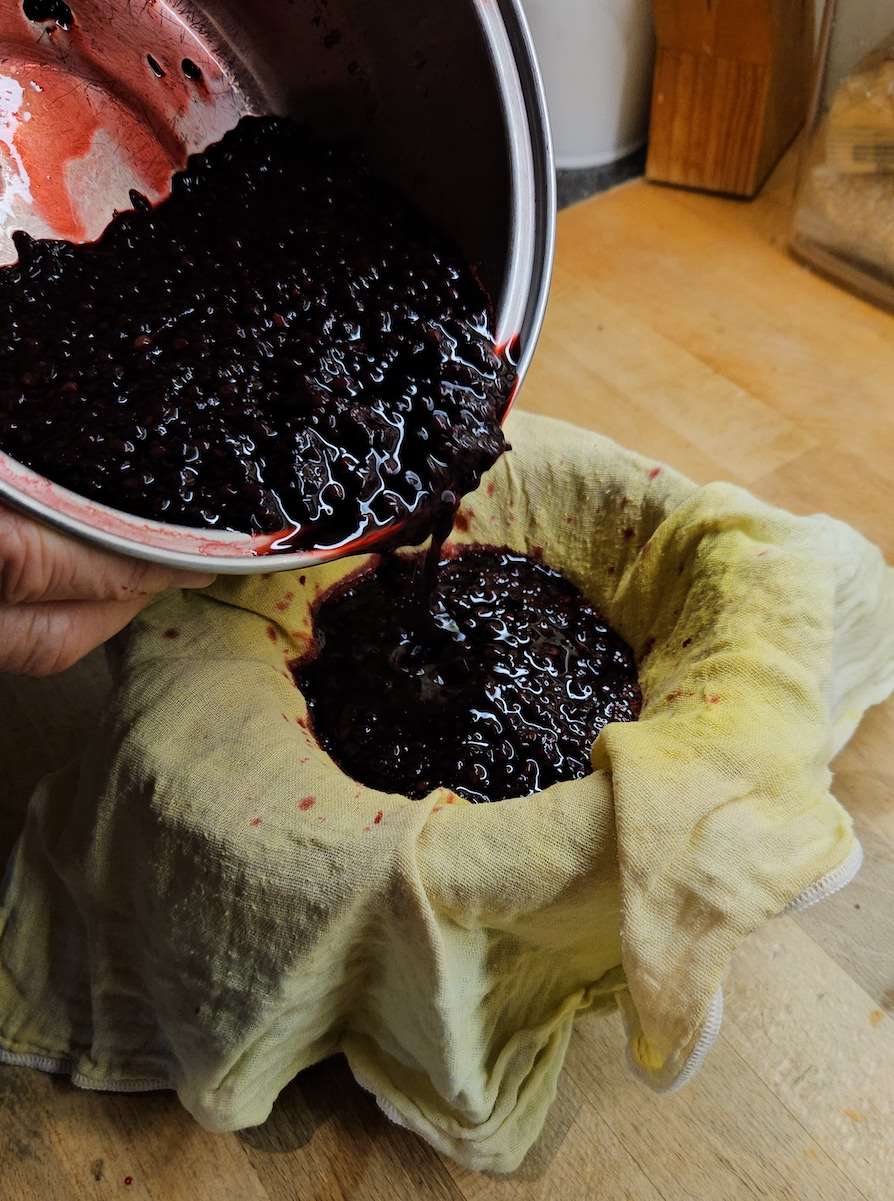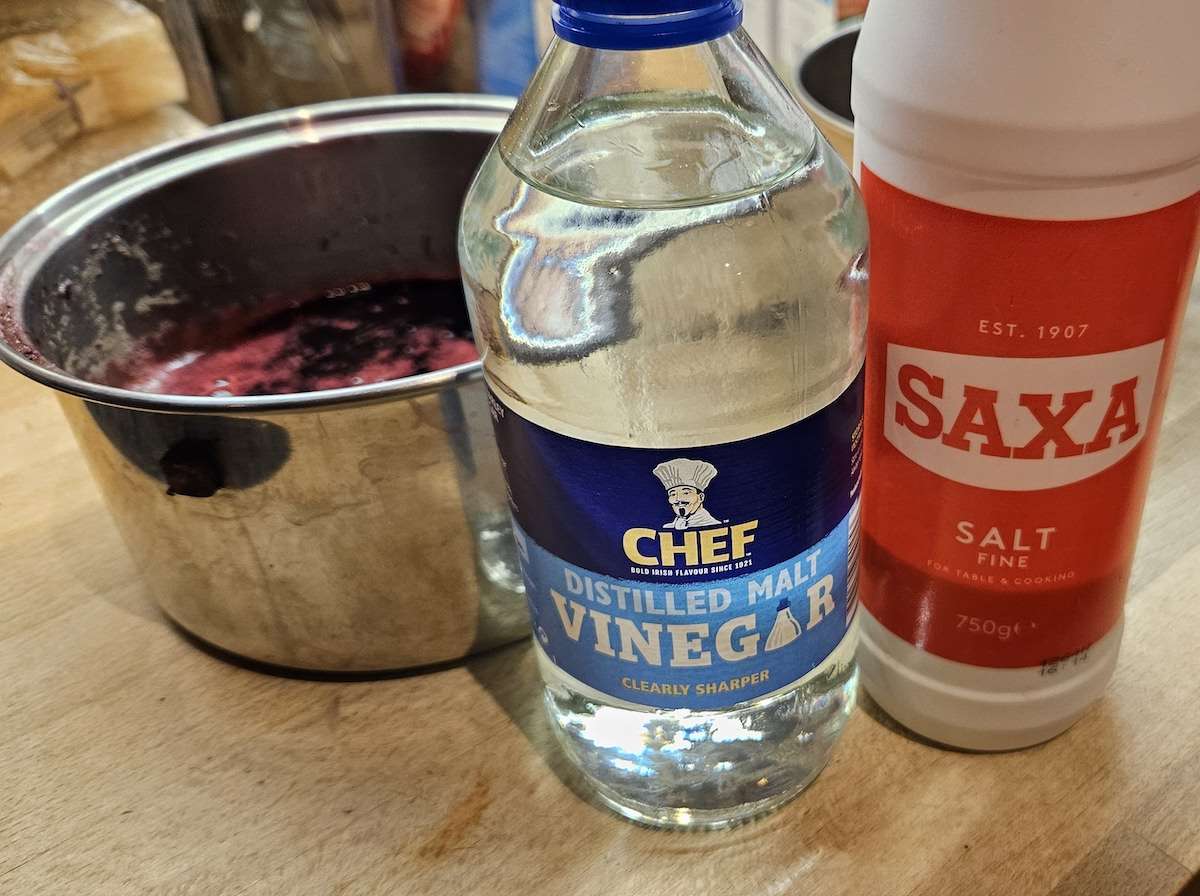Seasonal crafting: How to make wild elderberry ink
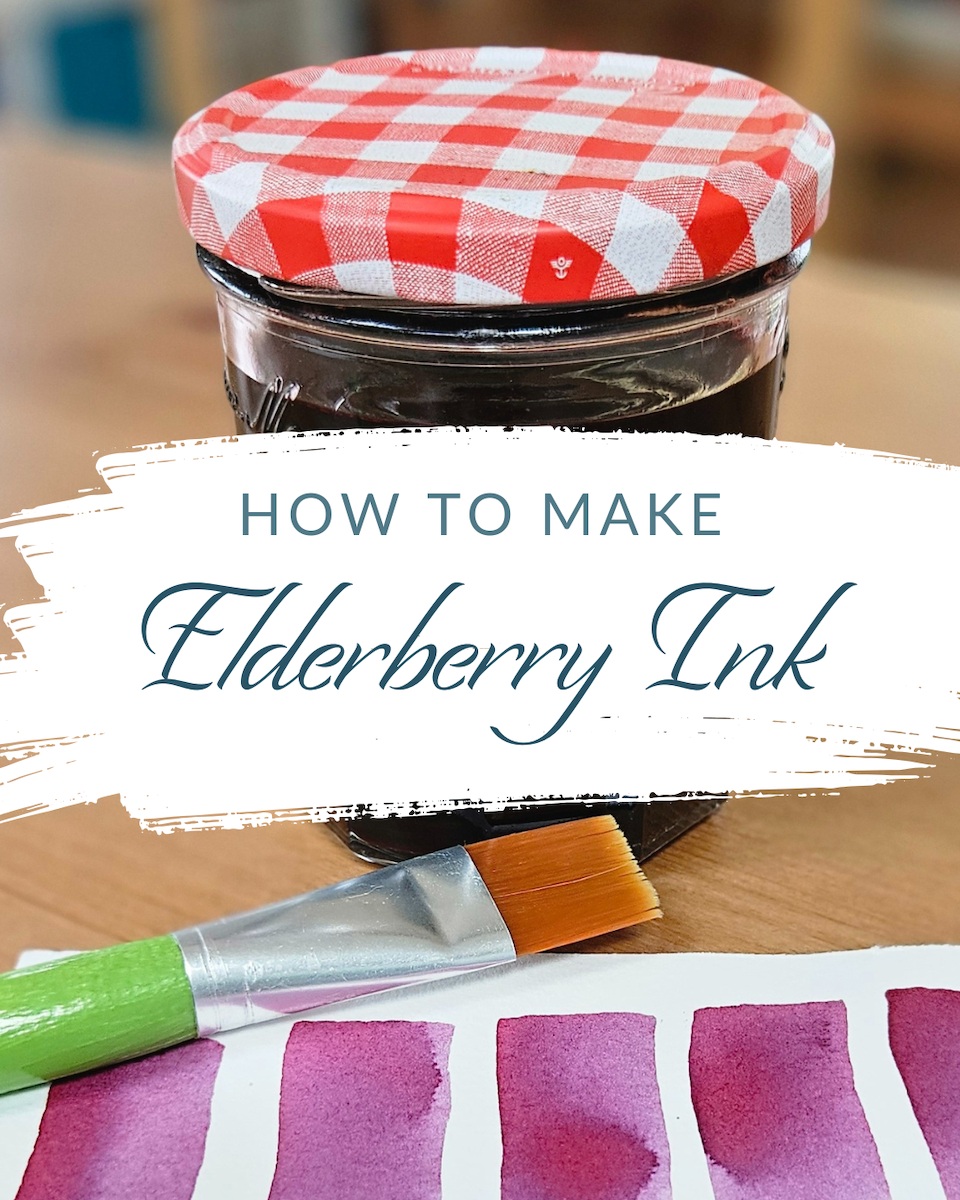
This week in Wicklow, I really started to feel the change in the seasons. As a self-proclaimed Autumn lover, I am SO here for it. There’s a little nip in the air (yay for my knitwear obsession), conkers are decorating our yard, and the hedgerows are bursting with berries.
And while we leave the majority of the berries for the birds to feast on, Lucy has been foraging away the past week, gathering just what she needs to turn into natural resources for our craft workshops. The bright red haws from the hawthorn, which are gathered only after asking the fairies’ permission (IYKYK), she is preserving for natural decorations in our Christmas willow wreath workshops. And the blackberries and elderberries (extra juicy this year), are being made into two of her most popular natural inks to use in our Art in the Wild workshops.
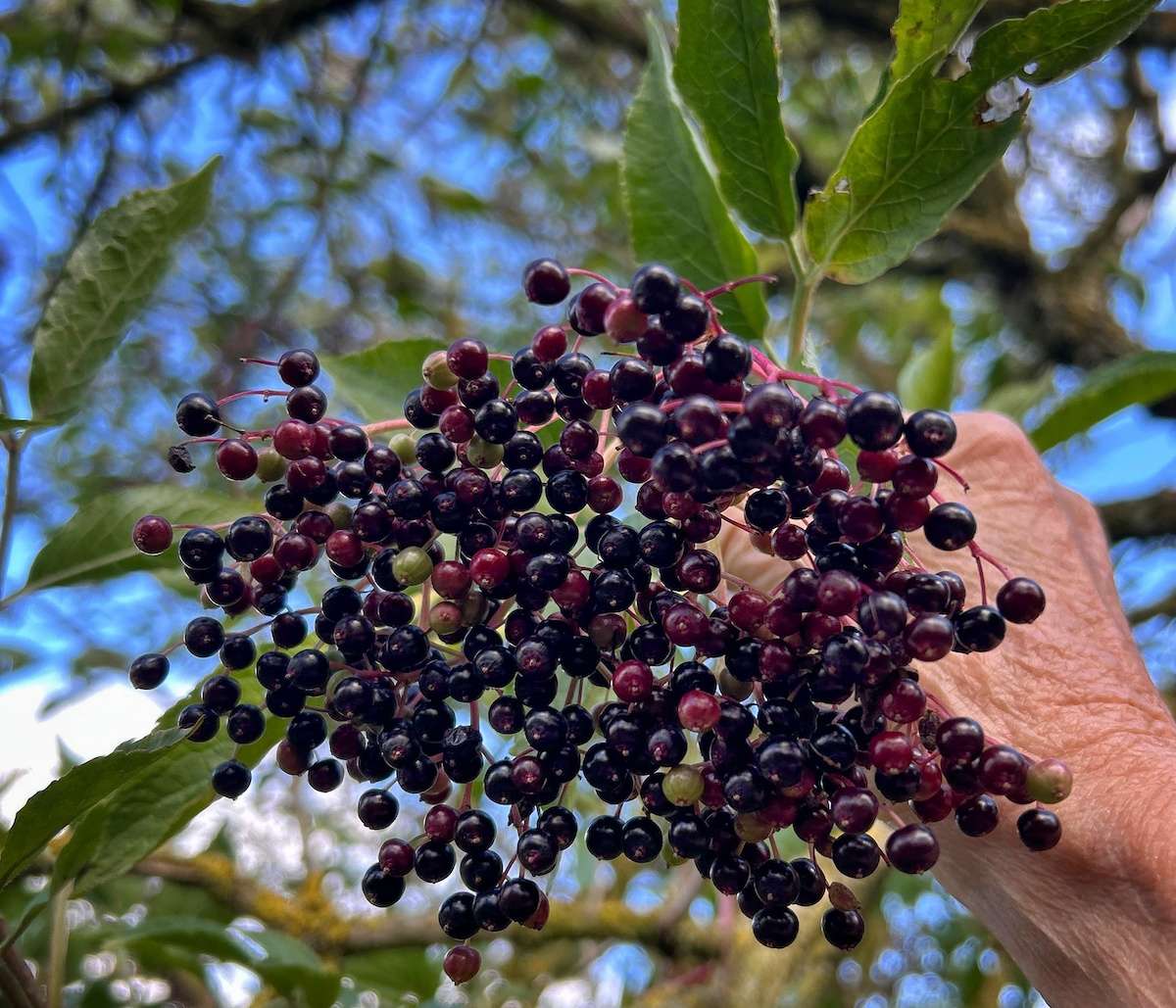
We’ve previously shared her blackberry ink recipe, and now we’re sharing her very favourite – wild elderberry ink!
There’s something so special about natural inks… it feels like you’re capturing a piece of the season, and sort of co-creating with nature. And with elderberry ink, watching the way the colour shifts from the moment you dip your brush into the dark red liquid, to the unexpectedly bright fuchsia colour that flows across the page, to the deep pinky-purple as it dries… it’s just magical.
Elderberry ink has actually been used for centuries, both for writing and drawing. The colour is wonderfully strong and vibrant, and it couldn’t be easier to make at home!
Read below for a simple how-to guide to make your own ink at home, and if you try it, please share the results via email or Instagram, we’d LOVE to see what you make!
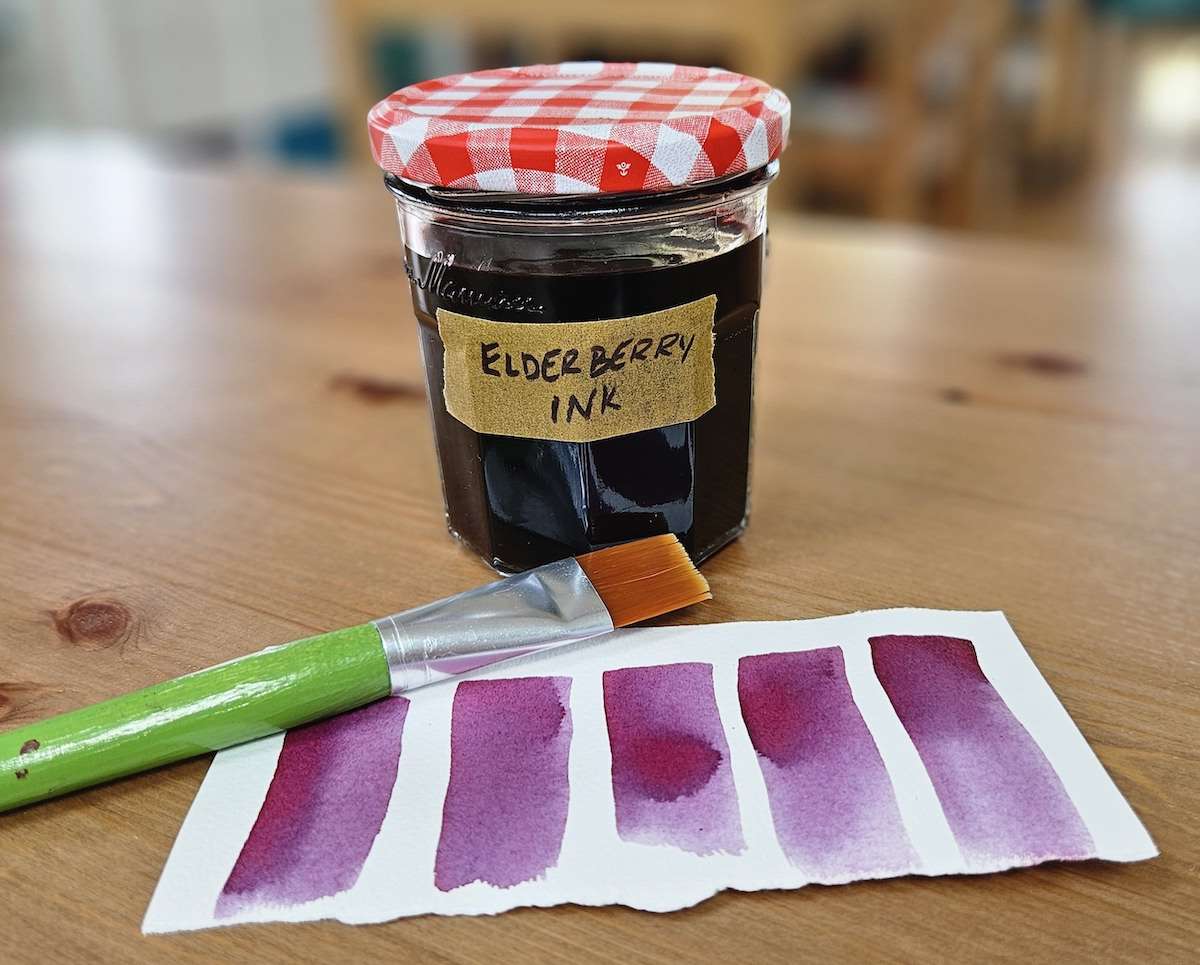
Elder in Irish Folklore
But first, let’s touch for a moment on the significance of elder in Irish mythology. Known as a tree of healing and protection, the elder tree holds a special place in Irish folklore.
Both the flowers and berries have been used for centuries in traditional remedies for colds and fevers. The presence of elderberries also signalled the time of harvest, a reminder to use what the land provides, gather in the last fruits before winter and to prepare for the darker months ahead.
There’s also quite a lot of mythology surrounding elder… both positive (planting an elder near the home was said to keep away evil spirits and misfortune) and less so. Burning elder wood in the fire was said to bring bad luck, and even invite unwanted spirits inside (although this is possibly a story born from practicality, as the wood doesn’t burn well and produces more smoke than heat!).
How to make wild elderberry ink
Step 1: Pick fresh, ripe berries (deep purple/black and glossy). When foraging for elderberries, remember to be gentle and only take what you need. As a rule, we always make sure to gather a small amount of berries off of many different plants, so we can be sure we’re leaving the majority for wildlife and reseeding.
Gently take the berries off of the stalks and place in a saucepan.
Step 2: Place enough water to cover the berries in the pan, and place on a medium heat to boil, for about 15min.
Step 3: Mash the berries with a potato masher (or fork or whatever you have!), to release the juice.
Step 4: Strain through a sieve into a bowl, to remove the skin and seeds.
Step 5: Strain the liquid again through a muslin cloth (or coffee filter) at least once. Top tip: wear gloves or your hands will be stained for quite some time!
Step 6: For every 1 cup of liquid you produce, stir in 1 tsp of salt (to help preserve), and 1 tbsp of white vinegar (to stabilise the colour).
Step 7: And just like that, you’ve got yourself some homemade wild ink! Store in a sterilised glass jar away from direct sunlight – your ink should last for at least 6 months!
Top tip: If you add a few drops of wintergreen oil, it’ll help preserve your ink for longer!
Step 8: Now, here’s the fun part—putting that ink to good use! It works amazing as an ink wash to add some colour to a drawing, or why not try and whittle yourself a quill from a stick, and try writing with it?! Enjoy the process and let your imagination run wild!

I hope this has inspired you to get out there, explore nature, and embrace your inner creative spirit.
This ink is perfect for journaling, calligraphy, or painting. Try writing seasonal notes, creating handmade cards, or sketching the autumn hedgerows. The colour shifts beautifully as it dries, making each mark feel alive on the page.
Because it’s made from natural ingredients, the ink won’t last forever—but that’s part of its charm. Use it while it’s fresh and enjoy the ritual of making more each year when the berries ripen again.
And please do share your results with us on our Instagram page, we’d LOVE to see what you create!
If you’d like to learn many more ways you can be creative in nature, check out our Art in the Wild workshops!
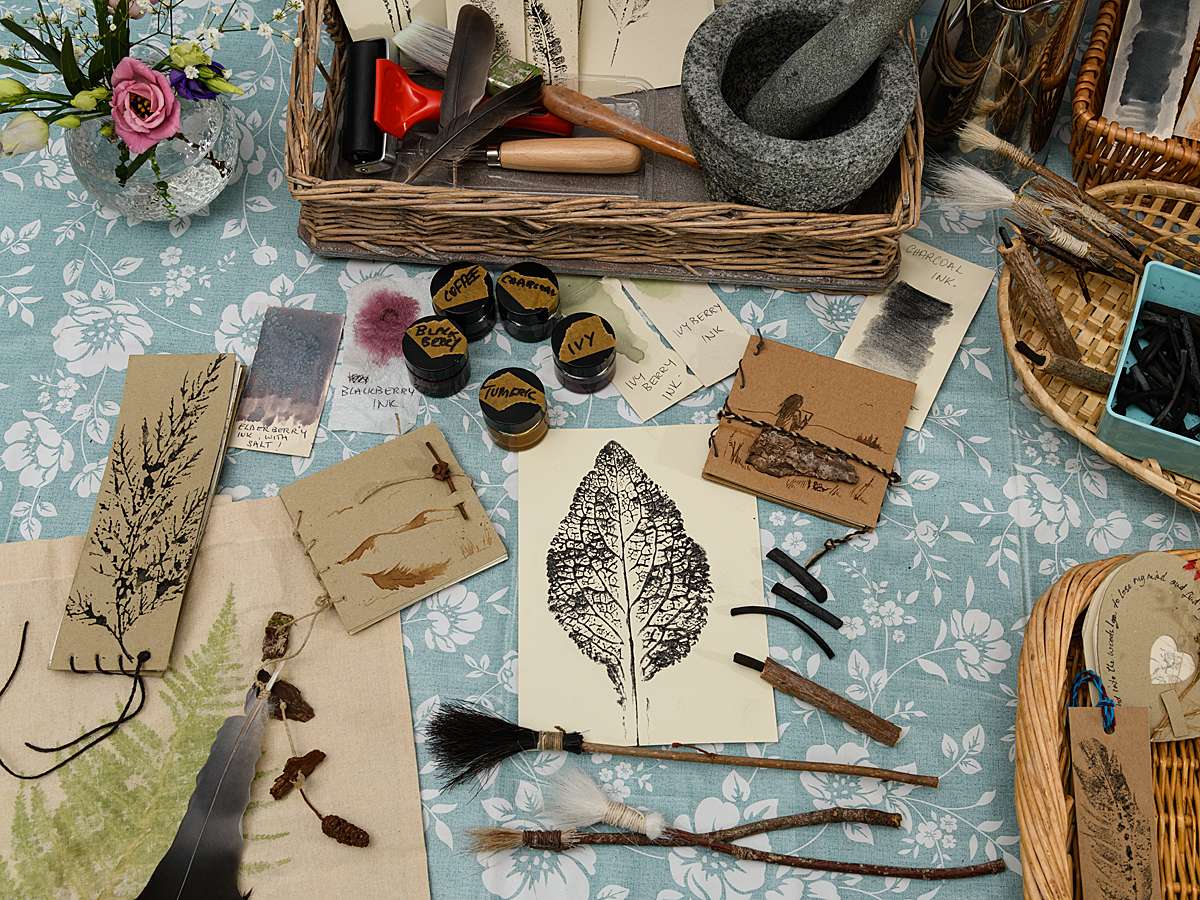
Happy crafting!
~ Sophie
